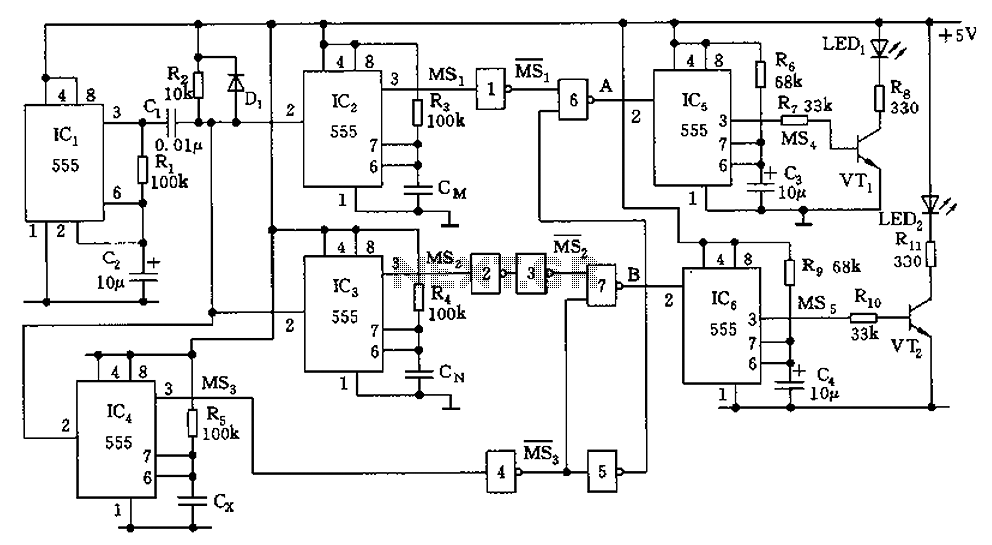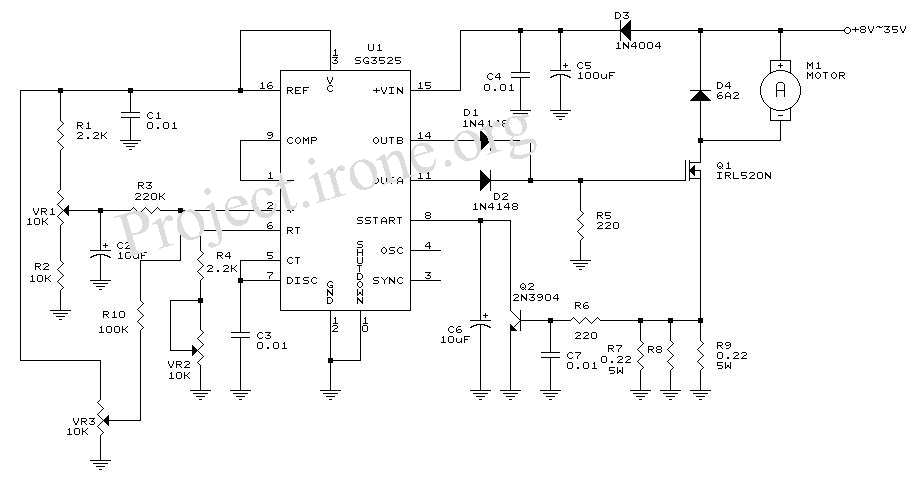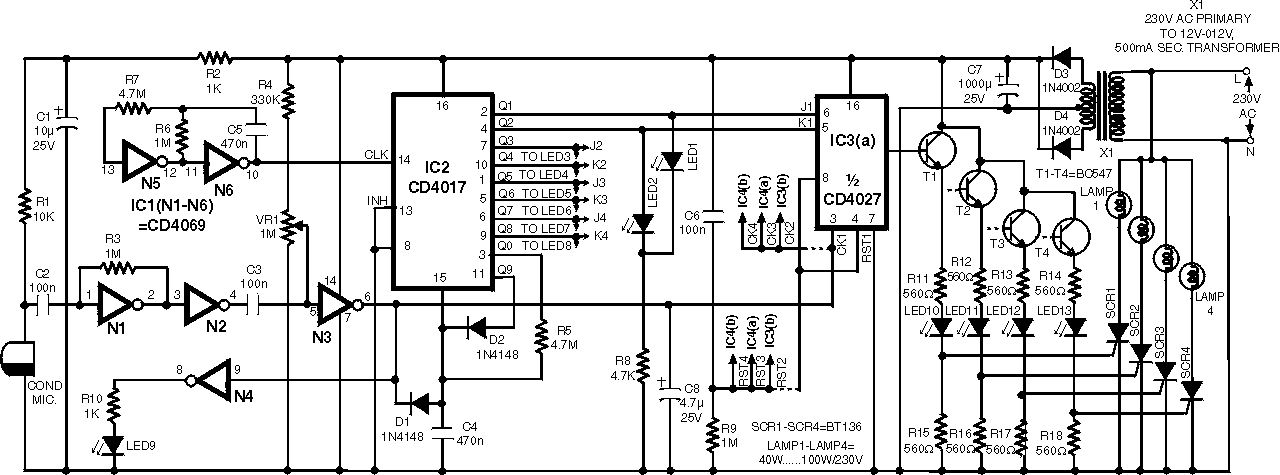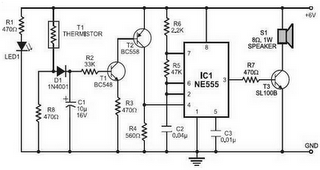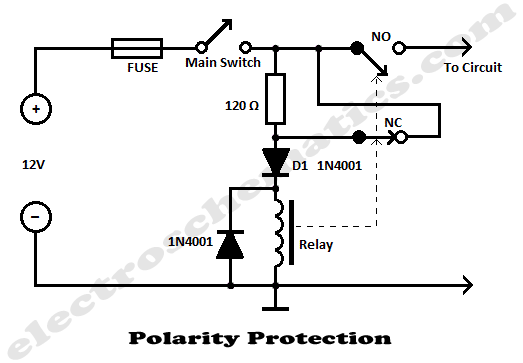
Twin Bell Circuit Circuit
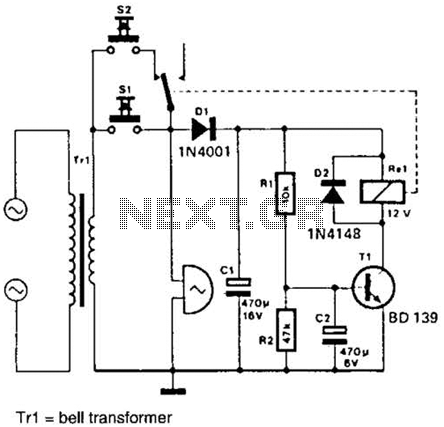
It is often desirable for a single doorbell to be operated by two buttons, for instance, one at the front door and the other at the back door. The additional button, S2 in series with the break contact of relay Rel, is connected in parallel with the original bell-push, S1. When S2 is pressed, the bell voltage is rectified by D1 and smoothed by C1. After a time, t = R{R2C2, the direct voltage across C2 has risen to a level where T1 switches on. Relay Rel is then energized and its contact breaks the circuit of S2 so that the bell stops ringing. After a short time, C1 and C2 are discharged, the relay returns to its quiescent state, and the bell rings again. In this way, S1 will cause the bell to ring continuously, while S2 makes it ring in short bursts, so that it is immediately clear which button is pushed.
The circuit design described enables a single doorbell system to be activated by two separate buttons, enhancing user convenience and providing a clear indication of which button has been pressed. In this configuration, the primary button, S1, is connected directly to the doorbell, allowing for continuous ringing when activated. The secondary button, S2, is integrated into the circuit in such a way that it operates in conjunction with a relay (Rel) to produce a distinct ringing pattern.
When S2 is pressed, the voltage generated by the doorbell is directed through a rectifier diode (D1) to ensure that the voltage is unidirectional, thus protecting the circuit from potential damage due to reverse polarity. The output from D1 is then filtered by a smoothing capacitor (C1), which stabilizes the voltage and reduces fluctuations that could affect the operation of subsequent components.
The time constant of the circuit is determined by the resistor (R2) and capacitor (C2), where the equation t = R2C2 indicates the time it takes for the voltage across C2 to reach a threshold that activates the transistor (T1). Once T1 is energized, it activates the relay (Rel), which interrupts the circuit connected to S2, causing the bell to cease ringing. This interruption effectively creates a short burst of sound, distinguishing it from the continuous ringing produced by S1.
After a brief period, the capacitors C1 and C2 discharge, allowing the relay to return to its resting state. This reset enables the doorbell to be ready for the next activation, whether from S1 or S2. The design thus ensures that S1 provides a continuous alert while S2 serves as a short, distinct signal, allowing users to easily identify which button has been pressed without confusion. This dual-button system is particularly useful in larger properties where multiple entry points require a single doorbell solution. It is often desirable for a single doorbell to be operated by two buttons, for instance, one at the front door and the other at the back door. The additional button, S2 in series with the break contact of relay Rel, is connected in parallel with the original bell-push, SI.
When S2 is pressed, the bell voltage is rectified by D1 and smoothed by CI. After a time, t = R{R2C2, the direct voltage across C2 has risen to a level here T1 switches on. Relay Rel is then energized and its contact breaks the circuit of S2 so that the bell stops ringing. After a short time, CI and C2 are discharged, the relay returns to its quiescent state and the bell rings again. In this way, SI will cause the bell to ring continuously, wliile S2 makes it ring in short bursts, so that it is immediately clear which` button is pushed.
The circuit design described enables a single doorbell system to be activated by two separate buttons, enhancing user convenience and providing a clear indication of which button has been pressed. In this configuration, the primary button, S1, is connected directly to the doorbell, allowing for continuous ringing when activated. The secondary button, S2, is integrated into the circuit in such a way that it operates in conjunction with a relay (Rel) to produce a distinct ringing pattern.
When S2 is pressed, the voltage generated by the doorbell is directed through a rectifier diode (D1) to ensure that the voltage is unidirectional, thus protecting the circuit from potential damage due to reverse polarity. The output from D1 is then filtered by a smoothing capacitor (C1), which stabilizes the voltage and reduces fluctuations that could affect the operation of subsequent components.
The time constant of the circuit is determined by the resistor (R2) and capacitor (C2), where the equation t = R2C2 indicates the time it takes for the voltage across C2 to reach a threshold that activates the transistor (T1). Once T1 is energized, it activates the relay (Rel), which interrupts the circuit connected to S2, causing the bell to cease ringing. This interruption effectively creates a short burst of sound, distinguishing it from the continuous ringing produced by S1.
After a brief period, the capacitors C1 and C2 discharge, allowing the relay to return to its resting state. This reset enables the doorbell to be ready for the next activation, whether from S1 or S2. The design thus ensures that S1 provides a continuous alert while S2 serves as a short, distinct signal, allowing users to easily identify which button has been pressed without confusion. This dual-button system is particularly useful in larger properties where multiple entry points require a single doorbell solution. It is often desirable for a single doorbell to be operated by two buttons, for instance, one at the front door and the other at the back door. The additional button, S2 in series with the break contact of relay Rel, is connected in parallel with the original bell-push, SI.
When S2 is pressed, the bell voltage is rectified by D1 and smoothed by CI. After a time, t = R{R2C2, the direct voltage across C2 has risen to a level here T1 switches on. Relay Rel is then energized and its contact breaks the circuit of S2 so that the bell stops ringing. After a short time, CI and C2 are discharged, the relay returns to its quiescent state and the bell rings again. In this way, SI will cause the bell to ring continuously, wliile S2 makes it ring in short bursts, so that it is immediately clear which` button is pushed.
